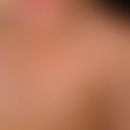Synonym(e)
Butylhydroxianisol; CAS-Nr. 25013-16-5; INCI-Kennzeichnung: BHA
Definition
Antioxidans. In Kosmetika, in extern anzuwendenden Medikamenten, Lebensmitteln (E320), Kunststoffen und Gummiprodukten
Anwendungsgebiet/Verwendung
Butylhydroxianisol wird v.a. Getreide und Getreideprodukten zugesetzt. Vereinzelt wurden kontaktallergische Reaktionen, chronische Urtikaria und Kontakturtikaria beschrieben. Für einen Provokationstest werden Dosen von 100 mg empfohlen.
LiteraturFür Zugriff auf PubMed Studien mit nur einem Klick empfehlen wir  Kopernio
Kopernio
 Kopernio
Kopernio- Barberis CL et al. (2014) Hydrolytic enzymes production by Aspergillus section Nigri in presence of butylated hydroxyanisole and propyl paraben on peanut meal extract agar. Rev Iberoam Micol 31:131
- Goodman DL et al.(1990) Chronic urticaria exacerbated by the antioxidant food preservatives, butylated hydroxyanisole (BHA) and butylated hydroxytoluene (BHT). J Allergy Clin Immunol 86:570-575.
- Hannuksela M et al.,(1986) Peroral challenge tests with food additives in urticaria and atopic dermatitis. Int J Dermatol 25:178-180.
- Le Coz CJ et al. (1998) Contact dermatitis from tertiary-butylhydroquinone in a hair dye, with cross-sensitivity to BHA and BHT. Contact Dermatitis 39:39-40
- Simon RA (1995) Food and Drug additives. Immunol. All Clin N America 15: 489-527



